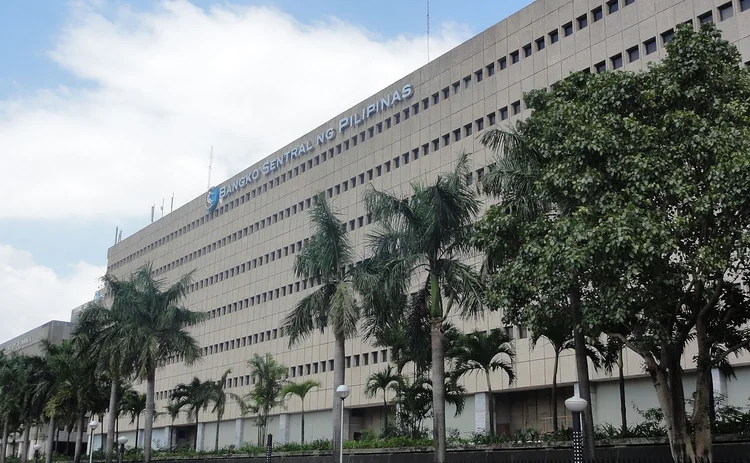
Currency initiative: Central Bank of the Philippines’ Cash Service Alliance
Homegrown IT system allows Philippine central bank to direct cashflows between banks during Covid-19

Cash distribution is a challenge in the Philippines, even during more ‘normal’ times. The country is an archipelago comprising more than 7,000 islands, which complicates domestic transportation. Natural disasters are also common, with the Philippines frequently hit by typhoons.
The pandemic made supplying cash even more complicated. The government locked down the Greater Manila area, home to more than one in four Filipinos. The Central Bank of the Philippines (BSP) struggled to distribute cash in the region, and directed banks to a facility 72km away.
The BSP had been involved in discussions with the Bankers Association of the Philippines (BAP), a commercial bank trade group, about developing a mechanism for co-ordinating the movement of available cash among the country’s banks since 2017. But the advent of the pandemic “fast-tracked the operational decision” to introduce a cash circulation mechanism, the Cash Service Alliance (CSA), says Ralph Meris, the BSP’s deputy director for the currency management sector.

The BSP issued Circular 1099, establishing the alliance, in October 2020. The document defined the CSA as “a currency circulation mechanism that aims to enable all [banks] to enter into a mutually beneficial agreement to service requirements for fit Philippine currency of other banks from their available currency holdings”.
The CSA allows the BSP to co-ordinate cash movements among the country’s commercial banks, without the need to supply them from its own stores. Through partnership with the country’s banks, the central bank can orchestrate the movement of cash between commercial institutions while improving its picture of overall currency needs.
“[It is] a practical but innovative industry utility that could never have come under any other circumstances,” Arnel Almaden, associate director at the BAP, tells Central Banking.
Old partners in a new dance
The BSP’s Meris says that within the region, Indonesia and Malaysia have mechanisms through which local banks can trade cash, but which don’t involve a central online facility managed by the central bank. And Reynaldo Burgos, a senior vice-president at the Philippine National Bank, says that there had also been some “bilateral arrangement of cash assistance” in the Philippines among some commercial banks prior to the CSA, but these did not involve central co-ordination or the use of an online exchange.
The CSA is innovative, as it co-ordinates and digitises previously informal practices, and links the currency requirement data with the BSP’s integrated currency management system (ICMS), which came online in April 2019.
The central bank developed the CSA’s online platform in-house, relying on technology developed by its own technology and digital innovation office. “After only a month, the initial version of the CSA system was already in the go-live phase, with more functionalities and improvements in the succeeding months,” says Meris. The system allows the central bank and member banks to provide information about currency stocks and requirements, and integrate this data with the ICMS.
The new platform also gives the BSP a better understanding of currency circulation across the Philippines. Meris calls the CSA an “innovation in data-gathering and data-sharing”.
Roll-out
The CSA entered operation in October 2020 in the Greater Manila Area, with 28 participating financial institutions. Between then and December 2021, the programme provided 375 million pieces of currency, worth Php302 billion ($5.8 billion). This equalled about 15% of the total volume of currency circulating in the Philippines as of December 2021. BSP data for 2021 shows that the CSA provided 36% of all currency requirements in the Greater Manila area.
The participating banks saved Php119 million in “service fees for BSP deposits and withdrawals”, Meris tells Central Banking. The BSP itself also needs fewer banknotes, because previously it had to meet cash demands with newly printed or newly processed banknotes.
In August 2021, the BSP extended the alliance across the country, to its 22 regional branches.
The BSP’s commercial partners are satisfied with the service. “There are still opportunities to improve, but the system is working [perfectly] right now to address the cash management demands of the banks,” says the BAP’s Almaden.
Burgos praises the CSA for providing better security, a “defined process including accountability at different levels, and technology integrated with the use of [a] BSP portal”.
Next steps
Now that the CSA has reached every part of the country, the central bank is considering extending its remit.
“[The BSP] is exploring how to maximise the CSA network to push forward the exchange and recirculation of coins,” Meris tells Central Banking. The central bank will also examine CSA data on currency usage and movement to help develop robust business continuity plans.
The BSP also intends “to strengthen the partnership with the BAP and the commercial banks” more generally, says Meris. This will be crucial when new polymer banknotes begin circulating later this year.
These notes will likely become familiar to a public that has not yet abandoned cash. However, thanks to the CSA, the polymer notes will not know the BSP vaults as well as their predecessors.
The Central Banking Awards were written by Christopher Jeffery, Daniel Hinge, Dan Hardie, Victor Mendez-Barreira, Ben Margulies and Riley Steward
Only users who have a paid subscription or are part of a corporate subscription are able to print or copy content.
To access these options, along with all other subscription benefits, please contact info@centralbanking.com or view our subscription options here: http://subscriptions.centralbanking.com/subscribe
You are currently unable to print this content. Please contact info@centralbanking.com to find out more.
You are currently unable to copy this content. Please contact info@centralbanking.com to find out more.
Copyright Infopro Digital Limited. All rights reserved.
As outlined in our terms and conditions, https://www.infopro-digital.com/terms-and-conditions/subscriptions/ (point 2.4), printing is limited to a single copy.
If you would like to purchase additional rights please email info@centralbanking.com
Copyright Infopro Digital Limited. All rights reserved.
You may share this content using our article tools. As outlined in our terms and conditions, https://www.infopro-digital.com/terms-and-conditions/subscriptions/ (clause 2.4), an Authorised User may only make one copy of the materials for their own personal use. You must also comply with the restrictions in clause 2.5.
If you would like to purchase additional rights please email info@centralbanking.com




